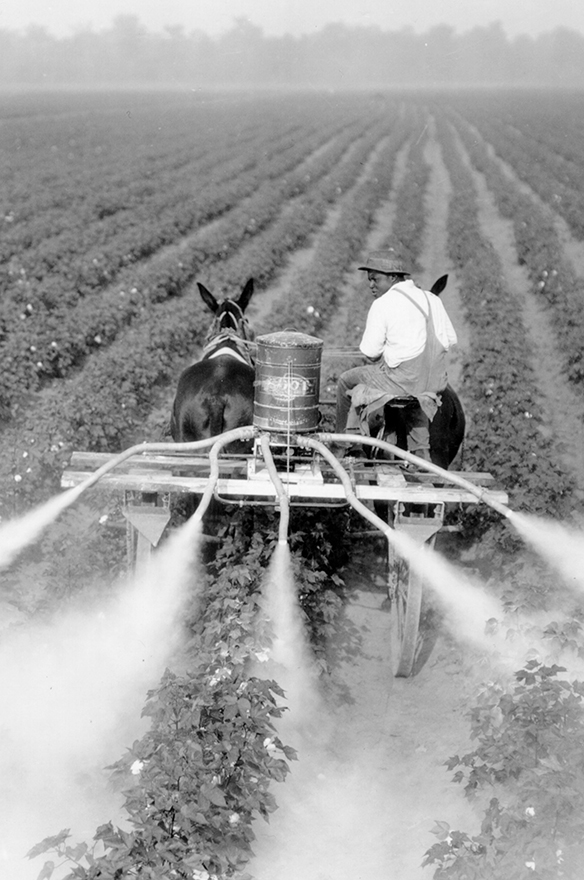USDA Arrives, Boll Weevil Eradication Ramps Up
In 1930, the Committee for the Promotion of the Delta, 154 Delta Planters and businessmen, went to Jackson and successfully requested funds for purchasing additional land and making further improvements to the present Delta Station campus. These funds were contingent upon the federal government locating a cotton research laboratory at the Delta Station. President Herbert Hoover signed a bill appropriation $100,000 for an experimental ginning and fiber lab to be located in Stoneville. In 1934, the Bureau of Plant Industry, USDA, acquired additional land adjoining the Stoneville campus, to establish a U. S. Cotton Field Station. A three-story building was constructed and was equipped with $6,000 worth of laboratory equipment and a generous annex. That same year, additional property was set aside for the U. S. Forest Service to be used for home sites for the influx of new Federal employees.
The Depression years proved disastrous not only for the nation but for the Delta Branch Experiment Station as well. In 1931, funds were extremely limited, there was a shortage of workers, and the price of cotton had dropped to 5 cents per pound. The mills found Delta cotton to be of such poor breaking strength that they turned to other states for cotton. At one point, it seemed the Station would have to close. But under the leadership of Charles W. Clark of Clarksdale, The Committee for the Promotion of Delta Agriculture continued active support for the Delta Station, successfully lobbying for funding of crucial research even during the Depression years.
Adversity seemed to abound, and the boll weevil continued to be a threat. The only ammunition available to farmers was calcium arsenate. Because dew on the plants caused the dust to adhere, it was applied at night or early in the morning, initially by mule-drawn wagons and later by tractors. But by the mid-1930s, aerial application had replaced the ground dusting method and had become a thriving business.
By 1935, the future of the cotton industry was optimistic, and farmers were again experiencing the promise of prosperity. A trainload of 160 International Harvester tractors arrived in Leland that year. The sale of fertilizers was up, and several thousand farmers attended the 16th Annual Delta Day.
-100 Years of Agricultural Research, The Delta Branch Experiment Station (2004)

